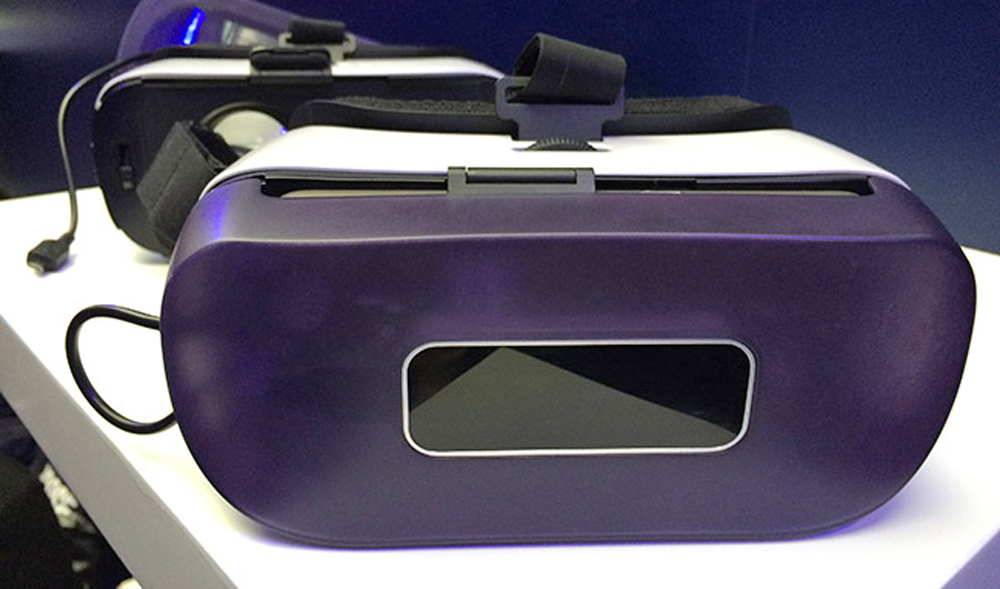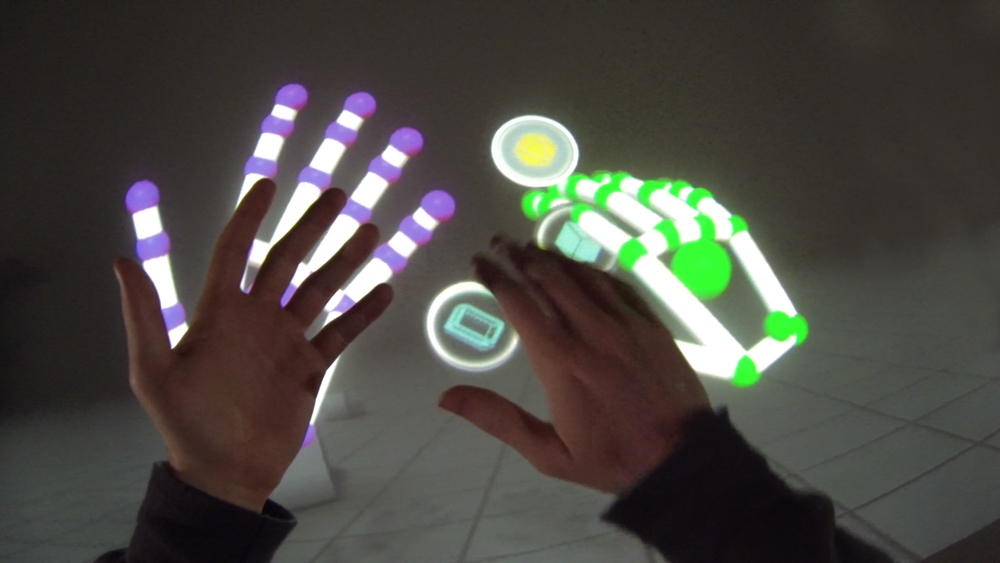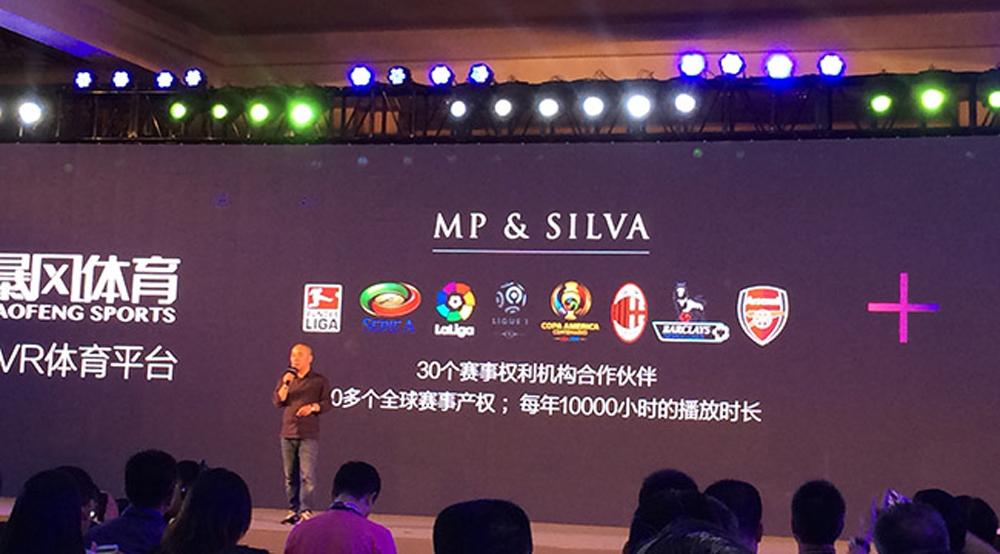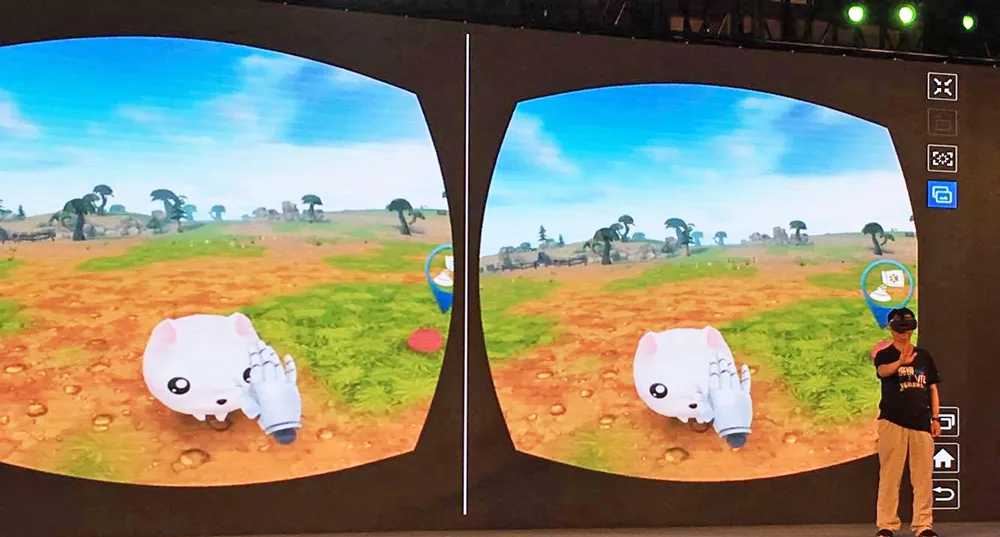Baofeng Group, a Chinese mobile communications giant, announced their fifth generation VR headset, the Mojing 5.0, on stage today in Beijing, China.
Baofeng Mojing’s CEO, Huang Xiaojie, called the headset the start of the “VR2.0 era” in China representing a quality step forward from the ‘cardboard class’ mobile VR headsets that have become commonplace. The headset uses a micro-USB to connect an Android phone to a set of sensors in the headset, similar to a Samsung Gear VR, creating a more comfortable and stable VR experience. But with the recent announcement of Google’s Daydream platform, comfort is only a baseline now for mobile VR, it is the additional features that the Baofeng Mojing 5.0 packs that potentially set it apart.

The Mojing 5.0 Plus (the upgraded version of the headset) has an integrated Leap Motion sensor on the front that allows it to track your fingers in virtual space – making it the first commercial headset with that feature set. Leap Motion previously said they would be integrating their device into consumer headsets, so this appears to be the first of potentially many devices to come with finger tracking integration.

And it wasn’t just finger tracking that Baofeng showcased, they also showed off positional tracking on the device – albeit with an external sensor rather than the long awaited inside out tracking. According to our sources at the scene the tracking device appeared to be a ‘little black box’, and while at least one Chinese source is suggesting it appeared to be similar to HTC and Valve’s Lighthouse tracking system for the Vive it is hard to tell. The tracking seems to be still in development, so it may not make its way into the final edition. We have reached out to Baofeng for clarification and will report back here with any additional information.
In addition to sporting a more robust hardware feature set than the Gear VR, the basic edition of the Mojing 5.0 (without Leap Motion) sports a cheaper price tag of 499 yuan (about $75 USD) than the Samsung equivalent. The upgraded version (with Leap Motion) will cost 899 yuan (about $136 USD). Cost and hardware equivalents aside, the Gear VR’s software is one of the things that helps set it apart as the current standard for mobile VR (at least for now) – it remains to be seen how the Mojing 5.0 compares to it in action. That said, the addition of finger tracking provides a useful interaction system for VR – something the Gear VR is currently lacking.

With a market primed with numerous motivated manufacturers, 100,000 HTC Vive equipped internet cafes, and a culture needing an escape from overcrowded cities, the Chinese VR market may ultimately be the true epicenter of consumer VR’s ascent into the mainstream. Baofeng’s rapid iteration process has allowed them to catch up quickly with the pace of the American VR technology market, they will be an interesting player to watch as they try to compete against mobile giants like Huawei and Tencent, both of whom are making strong plays into the VR space as well.


























